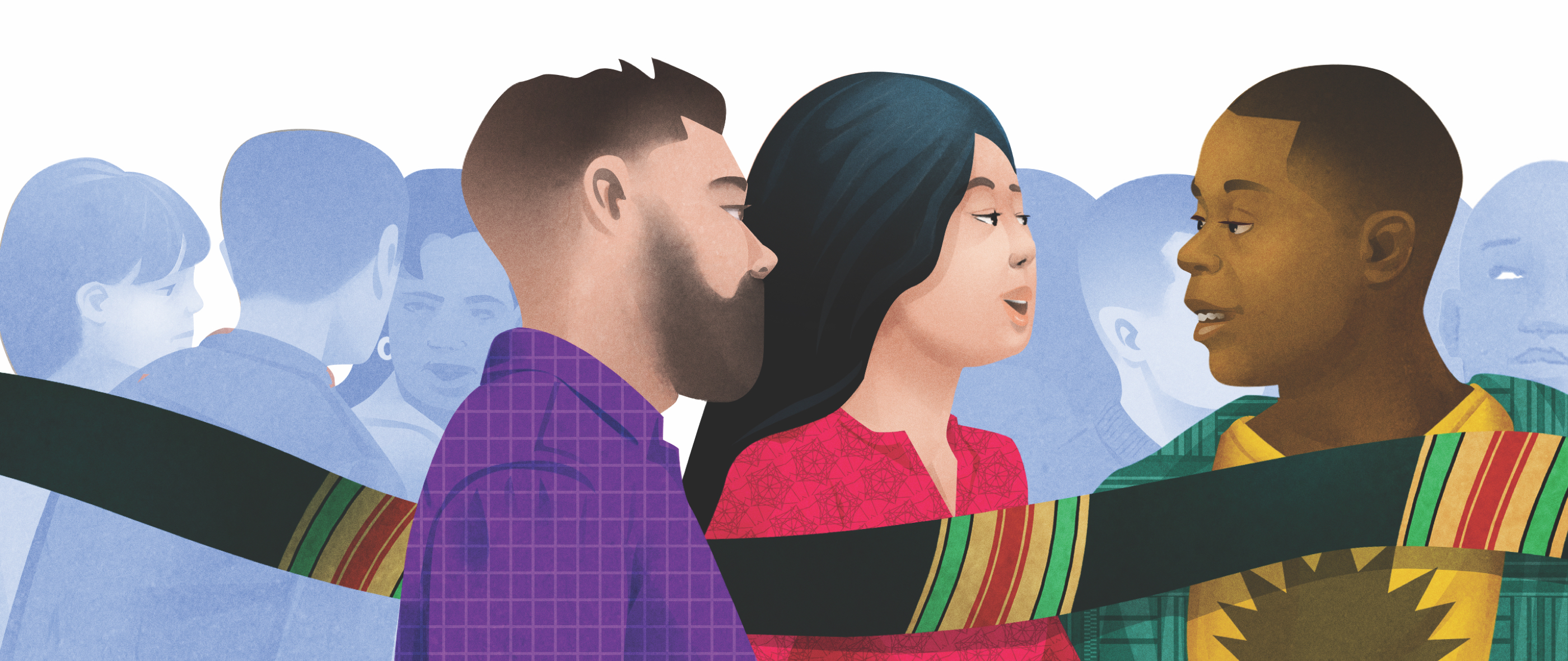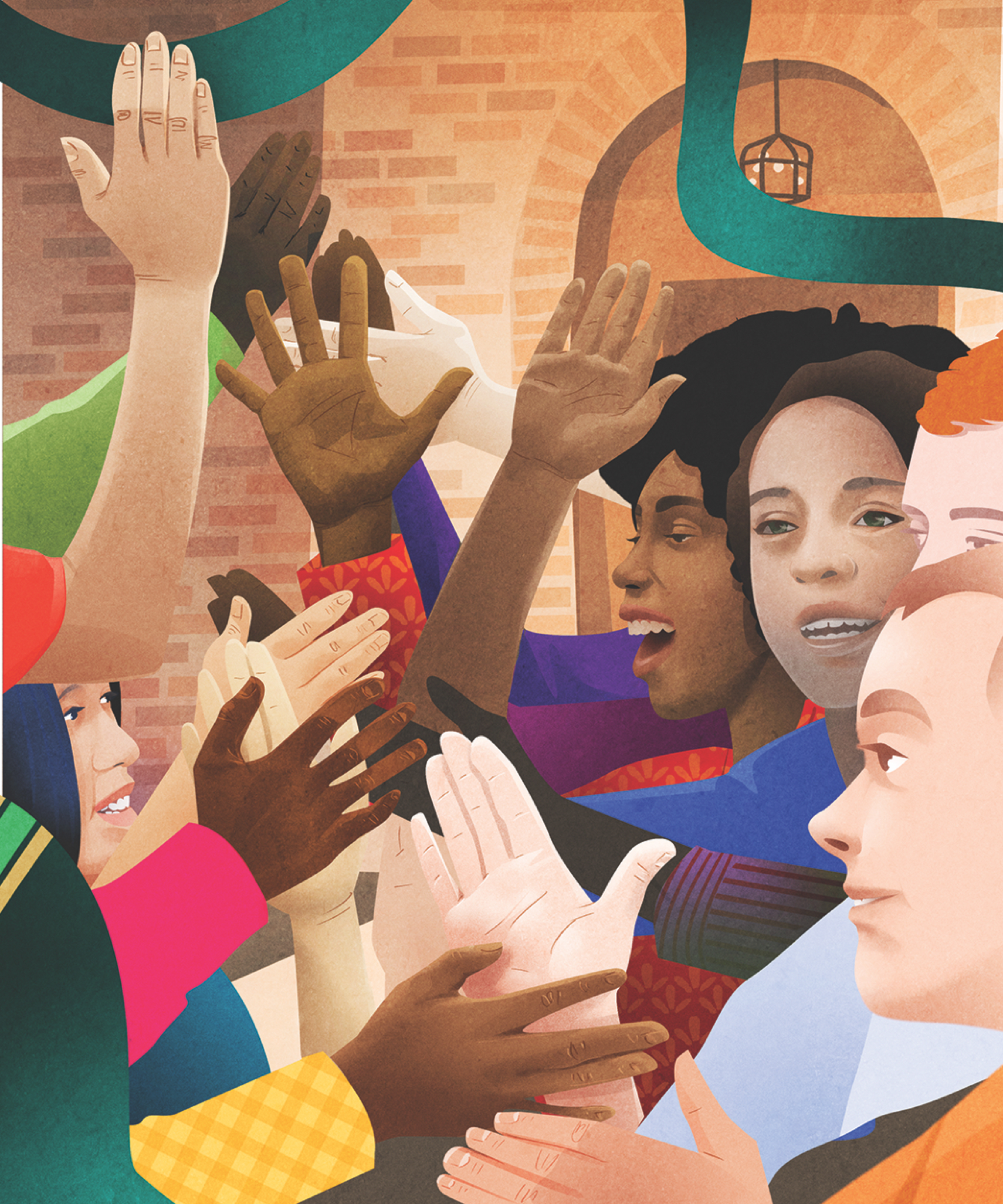My friends rallied around me and helped me keep campaigning. The administration was really supportive and understanding and asked me what I wanted to do. I just wanted to put it behind me. I lost the election. I don’t feel any one way about that. It’s just part of my story at W&M, but that was the opening chapter, so to speak.
Brandon: Some of the best moments of my life are connected to W&M. I ended up earning my varsity letter jacket for wrestling. I was a charter member of the Xi Theta chapter of Kappa Alpha Psi, which is still on campus. Dave [Scott] actually got me involved in the student assembly budget process so we had some representation — a room I never expected to be in. And the most lasting relationships in my life were created at William & Mary. My best
friend, since my first day as a freshman, is my W&M roommate Earl Granger ’92, M.Ed. ’98.
Dixon: Many of us are Greeks, and I think that was definitely one of the best experiences I had that W&M.
Greene: I wasn’t Greek, but I definitely made a lot of lifelong friends. Being Commencement speaker in 2012 stands out as a highlight for me. My senior year was also the first year of the Donning of the Kente. That was a super special ceremony to me, that we could have a graduation that specifically acknowledged Black students. I was so happy to be able to plan that.
Seeing the administration’s response to the living wage campaign was a lowlight. It wasn’t an overtly racist response, but when the vast majority of the people who are working in the service industries on campus are Black people and they are deprioritized and dismissed — that, to me, was a constant reminder of how this degree may be the only thing separating me from being treated in a similar way.
And I remember Trayvon Martin. His murder happened during my senior year. The Black community came together, but we got a lot of pushback from people who say mean things on the internet but aren’t necessarily going to say it to you. I remember feeling like a throwaway part of the community, like “You’re welcome here, so long as you are a benefit or you’re not creating too much noise.”
Scott: I was in school when the Rodney King beating happened. I was having those conversations with my white roommate and other people who were trying to wrap their heads around it, but just could never understand the same way.
Baskerville: I think we’ve all had those social justice flashpoints that occurred while we were on campus. I started to think way back to the day the students were murdered at Kent State. You felt almost powerless, but then you got together with other students to express concern, solidarity, understanding, frustration, fear, all of those kinds of things. We had protests at W&M then, too.
I do have some really great things that I miss. One was the way the Black staff at W&M just wrapped its arms around the Black students. And I don’t mean faculty, because we didn’t have Black faculty. I mean the people that served in the cafeterias, that were responsible for driving the buses. There were lots of times, especially toward the end of the week, when kids who weren’t on the meal program may not have enough money left and they just waved us through. In a sense, they were very proud that we were there because we were doing things that were breaking the color line, that they probably never dreamed would happen in their lifetimes. They treated us like extended family.
Dixon: In my time, we had Miss Ernestine in the Caf. Her face would just light up when she saw you and getting a hug from her would just kind of make your whole day.
For me, Dean Hardy, Miss Ernestine, Chon Glover, the Office Multicultural Affairs, that whole network was the backbone of my experience. I have other people that I’ve talked to from my class, but it’s nothing like the connection that I have with my Black W&M classmates.
Scott: How are you staying in touch as alumni?
Brandon: One of the most disappointing moments I had as a W&M alumnus happened four years ago. Both my daughters were accepted to W&M, but at the admission event, a student told them “Please don’t come here.” It took me the entire drive home to process that, because I thought we had moved forward. For a student to say that to a prospective student broke my heart. And so I lost the opportunity to sell my daughter on the school that I love.
I think it’s important to be willing to be an ambassador for the school as an alumnus. It is something that I take pretty seriously. I don’t have to tell someone that it is a perfect experience — what I can tell them is that it was right for me and share the benefits. I’ve worked at the University of Virginia, Virginia Tech, William & Mary, Ohio University; the same challenges existed at every one of them. You don’t end up at W&M by accident. So hopefully you come with an opportunistic mind to say, “I’m going to make it my lifelong work to make sure W&M is the best place for people like me,” which is why I stay involved.
Baskerville: What got me interested in William & Mary again was three years ago, when they did the 50th commemoration of the first African American women in the dorms. And I’ve been really impressed with the work that the Lemon Project has been doing.
Dixon: I went to the first Homecoming after I graduated because relationship maintenance is very important to me. I’m on the board for the Hulon Willis Association because somebody asked me to join. So, when my classmates come back and say, “This sounds like something you’d be interested in,” or “This sounds like something we could use your help with,” I’m doing it for them first, and then by extension for the university.
Brandon: I graduated in 1992, the year the Hulon Willis Association was created, and it has been my touchpoint with W&M ever since. My roommate Earl and Dean Hardy worked really hard with alumni, including Alice Willis HON ’04, the widow of Hulon Willis Sr. M.Ed. ’56, as well as their two children, Hulon Willis Jr. ’77 and Kimberley Willis Miles ’80, to start that organization. And so, as I see this blossom and I see the work that’s being done now by Val Cushman [senior director of engagement and inclusion initiatives] and her team, and I’m just so gratified and happy I stuck with it.
Greene: I try to do what I can to make sure the students that are there now feel supported, and if that takes financial commitment, then that’s what I do. I’ve never donated to my class since my senior year. I just don’t feel that connection in the same way. I donate when I can designate it to CSD or HWA or to the Lemon Project, and I know others do as well.


